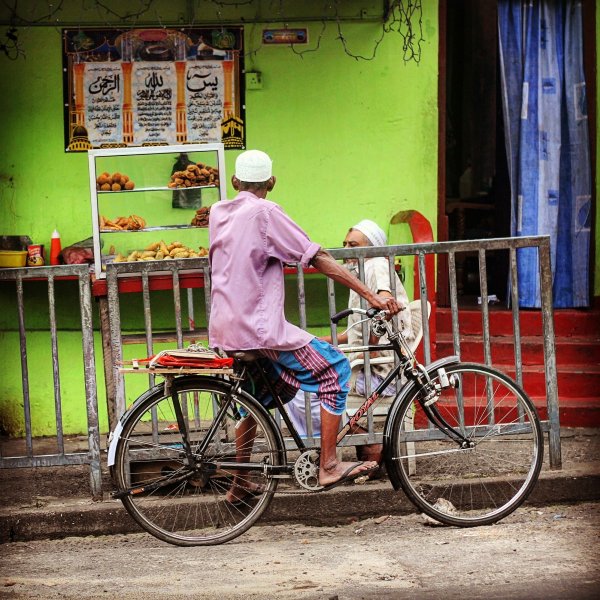
We recently gave you a bit of insight into little tricks and clever devices Sri Lankans of years gone by resorted to on a daily basis.
This time around, we compiled a list of traditional (mostly natural) solutions in dealing with a variety of creatures, from household pests, to stingers, creepy crawlies and others, starting with:
Rats, Cockroaches and Geckos
Creatures that have, time and again, caused distress in just about every Sri Lankan household, since forever. In a time before Mortein, Baygon and rat glue, people had to do something about these pests, and more often than not this ‘something’ was to just whack the fellows with an ekel broom (or any broom for that matter) or, in the case of rodents, set up traps (a messy affair for sure) or just chase them out of the house whenever one was spotted crawling, running, buzzing or lurking around.
There were, however, organic methods of keeping them away altogether:
- For geckos: placing egg shells in different places (nooks and corners of the kitchen or dining room for instance) was believed to ward off these icky lizards who are deterred by the smell of the egg shell.
- For cockroaches: a blend of onion paste, garlic paste and pepper powder, mixed with water and sprayed across any floor or surface would serve as an effective deterrent.
- For mice and rats: crushed mint leaves placed wherever one suspected a rodent could enter from was thought to ward them off.
Apart from pests of the household variety, Sri Lanka is also home to a diverse range of other little creatures that don’t provide for altogether pleasant encounters. In fact, some can turn out to be quite the enemy when you step outdoors. If you were an inhabitant of this island say, about 50 years ago, chances are you would have had to solve problems caused by unfortunate (and painful) insect encounters in one of the following ways:
Leeches
Somebody less acquainted with the great Sri Lankan outdoors would think that in order to encounter one of these blood-suckers you’d have to be exploring a tropical rainforest or wandering through the tea bushes in Hatton. Sometimes, however, even a not-too-adventurous, peaceful walk in your grandmother’s best friend’s garden in Kandy could be enough, especially if it’s the rainy season. Before you realise what exactly happened, there’d be a trickle of blood flowing down your ankle and a closer look would reveal – gasp! Eeya! Aiyyo! – a little dark brown wormy thing sticking to your skin.
This is the point at which your grandmother’s friend (or her gardener or housemaid) upon hearing your shrieks, would rush out with some salt water to sprinkle on the leech, and it would promptly fall off. What next? To help stem the flow of blood, an ideal solution was to just rub some soot on it. Soot from where? Burn a piece of old (clean) cloth, collect the soot from that, and just rub it on.
Wasp and bee stings
And no, you wouldn’t necessarily have to be stung by one of the legendary reincarnated warriors of King Kashyapa at Sigirya; just like with the leeches, a nasty encounter could take place in one’s own home garden, so of course, there had to have been a number of traditional means of dealing with such stings. One of them involved the leaves of the drumstick plant, locally known as murunga, and believed to possess medicinal properties. A mixture of murunga leaves, ghee and turmeric, ground together and applied to the skin was supposed to help ease the pain of the sting.
There were then the other random little creepy crawlies that you could come into contact with at any given moment, like…
Hairy caterpillars
Or dalabuwa, to us Lankans. Anyone who’s had one of these hairy creatures simply even crawl across a hand, foot or any other part of the body will know how much it itches afterwards. For this, a simple application of coconut oil (always at hand in any local kitchen) was known to be the go-to solution. This also worked for a number of insect bites, like ant bites.
Apart from insects and rodents, any Sri Lankan in possession of a home garden with fruit trees would be concerned about their fruit – mango, guava, rambutan etc. – being devoured by creatures like…
Squirrels and bats
A reasonable enough solution was devised for this (one that, thankfully, didn’t involve shotguns. Not in most cases, at least). All that was required was a big old tin with a metal rod passed through it, hung up on the branches of a tree, and with a rope attached, trailing down to the grown. Basically, a home-made bell of sorts, which would be rung by pulling on the rope, in order to frighten away any fruit-thieves.
As with the previous traditional life hacks article, these little strategies may vary in effectiveness for our modern (advanced?) lifestyles. And let’s face it, we do have alternative methods of dealing with things, but it really doesn’t hurt to know what our predecessors resorted to when trying to make the best of a sticky situation.

 Who knew Geckos were scared of egg shells?!
Who knew Geckos were scared of egg shells?!







